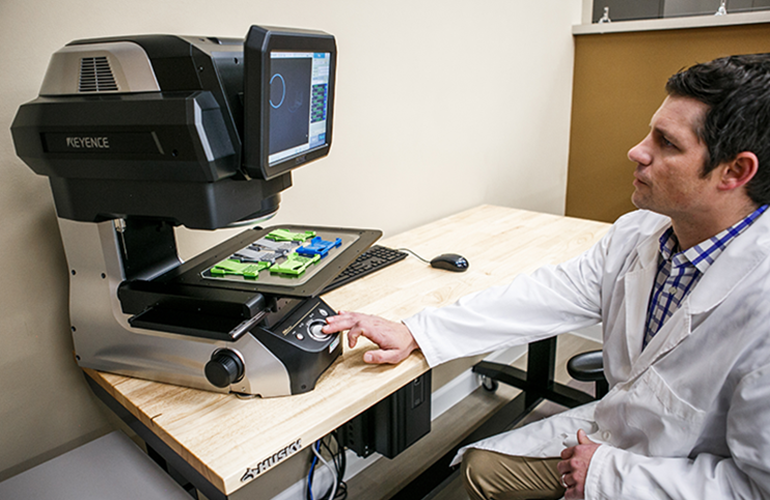From PTI Engineered Plastics
Reliable medical devices and equipment are essential for researchers and physicians to accurately diagnose and treat a variety of diseases. This is why the FDA has such strict oversight to ensure these products meet the required requirements and specifications. To ensure compliance, manufacturers follow Installation Qualification (IQ), Operational Qualification (OQ), and Performance Qualification (PQ) guidelines. IQ/OQ/PQ certifies that the necessary equipment is in place and the manufacturing process is in place to create devices that consistently meet the desired specifications. Several key areas with specific criteria are critical to the process but are often overlooked or underestimated.
Material selection:
First and foremost, availability is a decisive factor when selecting the material for a medical device. It is important to choose a material that is widely used in the market you are in. If the material is not generally available, you may be forced to change suppliers or material. If there is a change in either of the two, you must demonstrate that the new material is equivalent to your previous one. If you cannot demonstrate equivalence, you may need to re-validate, adding both time and money to your validation.
Don’t make pricing an important factor in material selection. While material costs are a large part of the final cost of the injection molded component, a difference of 5 cents or 10 cents per pound is not significant compared to the tens of thousands that re-validation can cost.
Part design:
One of the basic principles of good plastic part design is maintaining a uniform wall thickness (Request PTI’s DFM reference tool). If you are unable to maintain a constant wall thickness, thick to thin wall thickness is preferred for malleability.
The simpler the design, the higher the reliability (if properly constructed). Try to limit undercuts and other features that require action in the mold. Some designs require this complexity; However, make sure this is required before designing it. Keeping actions to a minimum reduces the risk of mold maintenance issues and mold damage, and keeps custom components off the mold.
Other important fundamentals are the right rib-to-wall thickness ratio, the right draft for part release, and the right gate locations. Above all, use a geometric dimensioning and tolerancing (GD&T) scheme that is realistic and does not require unnecessary and overly controlling criteria. For example, if only 3 critical dimensions are needed to fully define how a part will perform, do not provide more than that.
An effective and reliable tool to use during your project, especially in the part design phase, is plastic flow simulation software. The results of a simulation show whether a design is moldable, as well as any problems that may arise during the molding process, such as: B. warping, sinking, shrinkage, molecular orientation and glass orientation.

PTI’s design-for-manufacturing reference tool
Mold making and construction:
While part design for a medical device dictates the manufacturing plan, mold design is what really shapes the end product. Unless you have a well-planned and executed mold design, it is almost guaranteed that you will encounter problems later, especially if you need to replace the mold for some reason. So take your time in designing and building.
If you intend to use the mold to produce millions of parts, you need to make sure you choose materials that will stand up to 20 years of production and not just short-term needs. If you don’t use the right material to build the mold based on the resin and project requirements, you may need to replace it prematurely, which may not impact your overall validation costs in the future.
Correct protocol documentation:
Once you have an approved mold design, you and your team must document the design specifications, which describe the specific details about the mold and its performance. These details then feed into the Installation Qualification (IQ) for the tool to ensure it is qualified and working properly. Once the IQ is complete, Operational Qualification (OQ) and Performance Qualification (PQ) protocols are created, outlining the entire process.
When using automation, details such as the correct latches and their performance, which parts are used by which supplier, and where each part goes should be outlined. Even something as specific as steel dimensions could be included in the IQ protocol. Should the mold become damaged or components rebuilt, the IQ protocol can be used as a reference for the required steel geometry. This not only saves time but also helps to avoid re-validation in case you need to use a replacement component or rebuild the tool.
Careful attention to detail in these key areas not only lowers the overall cost of validation, but also reduces production downtime and ensures the long-term success of your project.
Sponsored Content by PTI Engineered Plastics

